Đánh giá Kindle 2019
The basic entry level Kindle has been refreshed with some pretty compelling features. It has a brand new E Ink Carta display, whereas all of the other Kindles employed E Ink Pearl, which came out in 2010. It also is employing a front-lit display, which is ideal for reading in the dark, but unlike smartphones which are backlit, this technology has LED lights on the bottom of the bezel that projects light evenly across the screen. Should you buy the new Kindle? This hands on review should answer this very question.
Hardware
The entry level Kindle e-reader features a 6 inch E Ink Carta display with a resolution of 800×600 and 167 PPI. This is the first Kindle with a front-light display, which allows you to control the brightness using a slider bar. It has 4 LED lights that are on the bottom of the bezel and project light upwards, so it is not shining in your eyes.
Some people say that they do not notice PPI, but the 167 PPI display on the Kindle, is noticeably different than the 300 PPI on the Paperwhite or Oasis. Close examination of the screen will reveal a mild blur around text, indicating a low resolution panel. However, this difference fades from view once you start reading a book. Unless you’ve got both Kindles sitting next to one another, you won’t know that you’re missing anything. That is, unless you read a lot of graphic novels. High-quality graphic content definitely shows off the advantage of the higher resolution display on the Paperwhite.
Underneath the hood is a NXP 6SLL (Cortex-A9 @800M/1GHz processor and 512MB of RAM. There is 4GB of internal storage to house all of the ebooks you have purchased from Amazon or from your own personal collection that you have sideloaded. There is no SD card for additional storage, but no Kindle after the 1st generation model has had one.
The new Kindle also has Bluetooth for wireless headphones or an external speaker and has the Audible audiobook store. This will allow you to purchase audiobooks and listen to them.
The overall design is remarkably similar to all the other basic Kindle models, as instead of shaving off areas or redesigning the entire look, Amazon has stuck to its guns with what’s become a consistent visual aesthetic. When you hold it in your hands, it is immediately apparent that it doesn’t feel as premium as the Kindle Paperwhite.
One of the first things you will notice is that the bezel is quite large and the screen is sunken and not flush with the bezel. This has the advantage that the screen is not as easy to scratch. It’s notably easy to hold in the hand though, with its 6-inch display making it easy to hold in one hand even when you’re being thrown about on a train and you need to hold on for dear life with the other hand. The exact dimensions are 160 x 113 x 8.7mm, which while thicker than more expensive ereaders isn’t noticeably different. The body of the ereader itself is plastic, and this is largely why it feels less premium than the all-metal body of the Kindle Oasis.
It is important to note that this device is not waterproof and the battery should only last a couple of weeks if you read for a few hours every day. Amazon has confirmed with Good e-Reader that this entry level Kindle is employing a 1040mAh battery.
Software
The Amazon Kindle line of e-readers uses a custom Linux operating system. The consistency of the UI and fluidness is one of the big reasons why Amazon Kindle owners feel right at home, no matter the model. Amazon constantly pushes out firmware updates to fix bugs and add new features, they do this better than Barnes and Noble and Kobo. The Amazon OS is basically rock solid and hardly ever crashes.
One of major selling points is when you finish a book, it will automatically be marked as read in your library and synced across your reading devices including Kindle, Fire tablet, and the free Kindle apps for iOS and Android. With just a few taps, you can filter to see which books you’ve read and which you haven’t, so organizing your library has never been easier. This feature is slowly becoming available to other Kindle e-readers.
Audiobooks are a billion dollar industry and Audible is the largest online retailer. The new Kindle has audiobook functionality and you can buy them a new audiobook section from the Amazon bookstore.
Purchasing audiobooks on the Kindle is really easy, providing you already have an Audible account. If you do not have an Audible account you can register one for free. Audible basically has two different systems in place. You can subscribe and get X number of credits per month, depending on how much you want to pay or pay for each title individually without subscribing.
When browsing the Audible catalog on the Kindle everything is split up into genre sections and there are some editorial based content based on the season, various book awards or special events. There are free samples of every title available, so you can get a sense of the narrator and the production quality.
Once you download a full version of the audiobook you can listen to it with the audio player or delete it from your device when you are done and it will be stored in the cloud. If you already have an Audible account on your smartphone or tablet and already used credits for past purchases, these all will be available to download from your Kindles library.
The built in audiobook player is tremendously robust. You can skip forward or ahead fifteen seconds or change the pitch level. While listening to an audiobook, the Kindle displays how much time is left in a chapter and has software driven volume button. There is a bluetooth notification on the bottom of the screen that tells you what device you have paired it with. If you have not connected a pair of headphones or wireless speakers with it yet, it will walk you through the setup process.
It is important to note that you can’t pair the Kindle with a smartphone or tablet. You can only do it with a Bluetooth enabled device like headphones or a speaker. I haven’t tried it yet with the new Sonos speakers, but cheap stereo speakers works.
There are a number of other features the Kindle brings to the table. Through the Family Library feature, you can link two Amazon accounts to share books across devices. Each adult account will retain its own furthest page read location, notes, highlights and social media connections. To link accounts on a Kindle you have to go into Menu > Settings > Registration And Household > Household And Family Library. From there, you tap Add A New Person and Add Adult. You’ll need the new person to enter their Amazon account ID and password.
You can also add up to four child profiles under Amazon Households. You’ll follow all the same procedures, but will tap Add Child instead of Add Adult at the end. Parents can then hand select which books their child can access.
For those looking to broaden their horizons, Amazon embeds a vocabulary builder and dictionary definitions within texts. It also has X-Ray, which gives you a list of the people, places and things in an ebook, and lists them all in a book.
The built in audiobook player is tremendously robust. You can skip forward or ahead fifteen seconds or change the pitch level. While listening to an audiobook, the Kindle displays how much time is left in a chapter and has software driven volume button. There is a bluetooth notification on the bottom of the screen that tells you what device you have paired it with. If you have not connected a pair of headphones or wireless speakers with it yet, it will walk you through the setup process.
It is important to note that you can’t pair the Kindle with a smartphone or tablet. You can only do it with a Bluetooth enabled device like headphones or a speaker. I haven’t tried it yet with the new Sonos speakers, but cheap stereo speakers works.
e-Reading
Whenever Amazon releases a new e-reader it often has features not found in any other device. This was designed to encourage people to upgrade if you want the latest and greatest. The Kindle, Paperwhite 4 and Oasis have all of the latest bells and whistles.
Amazon developed a font called Ember and Ember Bold awhile ago and it was designed to give people with vision disorders a really bold font to make it easier to read. The Kindle has a bold slider bar that can make any font bolder. You can do this with Caecilia, Bookerly, Ember, or any of the other default fonts. The slider bar has numerous options to increase the boldness. The company has also adopted the same slider bar to increasing the size of the fonts. In total there are 10 different fonts, 16 font sizes and five boldness settings.
There are some new preset settings to get you reading right away. One is for people with vision disorders and it will automatically made the text very bold and large, making it easy to read. Others are for the average user that displays small or medium sized fonts.
The Kindle does not have the fastest page turn speed, compared to the Paperwhite 4 and Oasis, but if you don’t have these two units in your possession, you likely will be happy with the Kindles performance.
You can take notes, make highlights and annotations. You can lookup words in the built in dictionary and access them in Wikipedia. The Kindle also uses Bing Translations on all of their e-readers, so you can translate a specific word or a body of text from one language to another. If you highlight a block of text or a single word, instead of looking them up you can share them via Facebook, Twitter, GoodReads or Email.
One of the features I dig about the e-reading experience is the ability to shut off things like time remaining in a chapter or what page you are on. Eliminating the status bar, or just giving the option to shut it off completely is truly excellent.
The PDF experience is fairly lacklustre on the new Kindle, this is because the screen quality isn’t that great and the processor is sluggish compared to the higher-end Kindles. When you load PDF files on the device it handles them ok, but not stellar. A small minimap with a screenshot of whatever page is displayed will be on the top right hand corner. This will help orientate and display the exact positioning. Page turn speeds are noticeably diminished compared to an ebook, but Kindles really weren’t built to support the format in a meaningful way.
Overall there are a few notable features with PDF support. You can pinch and zoom to a piece of text and you can highlight it, select specific words or a body of text. There is options to translate it to a foreign language or just lookup the definition from the dictionary. A slider bar will help lighten or darken the document, depending on if it a scanned PDF that might not have the right color correction.
Wrap up
The Kindle (2019) has a refined, compact design and is the most affordable Kindle with an integrated light. The 4GB of storage should be enough for most people who do not have their own massive collection and buy everything from Amazon anyways, so it is all stored in the cloud.
I think it is important to note that the entry level Kindle is a good e-reader for people who have really old devices and are looking to upgrade. If you already are knowledgeable and have your fair share of e-readers, the Paperwhite 4 is the better buy. I would only recommend the entry level Kindle to someone who wants a cheap and cheerful e-reader.
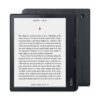
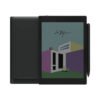


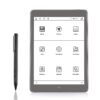

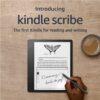
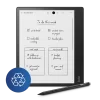
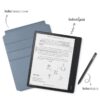
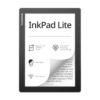

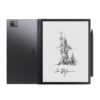



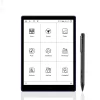
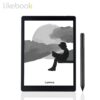
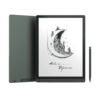

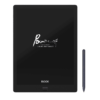






để luôn cập nhật tin tức và sách nhanh nhất!